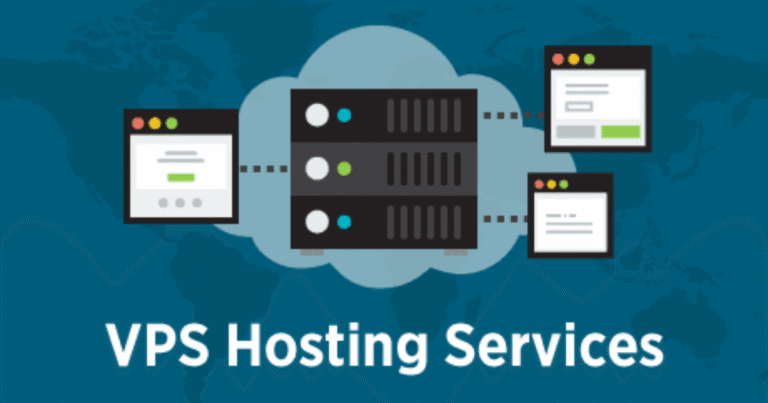What Is Cloud Hosting And How Does It Work?
As websites and online applications grow in complexity and popularity, traditional hosting methods often struggle to keep up. This is where cloud hosting comes into play. Cloud hosting has become a popular and effective solution for hosting websites, applications, and services due to its flexibility, scalability, and reliability.
This article explores the concept of cloud hosting, how it operates, its advantages, types, and important considerations to help you understand whether it’s the right hosting option for your needs.
Understanding Cloud Hosting
What Is Cloud Hosting?
Cloud hosting is a web hosting service that uses a network of virtual servers hosted on a cluster of physical servers, rather than relying on a single server. These virtual servers pull their computing resources — such as CPU, RAM, and storage — from a shared pool spread across multiple machines.

Unlike traditional hosting, where your website is stored on a single physical server, cloud hosting distributes your data across a network of servers in the cloud. This enables greater flexibility and resilience.
How Does Cloud Hosting Work?
When a user visits your website or uses your application, the cloud hosting service directs the request to one of many servers in the cloud network. Because resources are pooled and dynamically allocated, the system can automatically balance loads and reroute traffic to prevent downtime and slow loading times.
The cloud infrastructure works behind the scenes to allocate resources based on demand, ensuring that websites and applications remain accessible and responsive, even during traffic surges.
Key Components of Cloud Hosting
Virtualization Technology
Virtualization is at the core of cloud hosting. It allows multiple virtual machines (VMs) to run on a single physical server. Each VM operates as an independent server with its own operating system and resources, enabling efficient use of physical hardware.
Resource Pooling
Physical resources such as processing power, memory, and storage are pooled together from multiple servers. This creates a flexible resource pool that virtual servers can tap into as needed, providing scalability and high availability.
Load Balancing
Load balancing distributes incoming network traffic across multiple servers. This prevents any single server from becoming overwhelmed and ensures consistent performance and uptime.
Data Redundancy
Cloud hosting uses data redundancy by storing copies of data across multiple servers and locations. This means if one server fails, your data is safe and your website remains accessible.
Types of Cloud Hosting
Public Cloud Hosting
In public cloud hosting, the cloud resources are owned and managed by a third-party service provider and shared among multiple users. This model is cost-effective and suitable for most businesses looking for scalable hosting.
Private Cloud Hosting
Private cloud hosting provides dedicated cloud resources exclusively for one user or organization. It offers enhanced security and customization but generally comes at a higher cost.
Hybrid Cloud Hosting
Hybrid cloud hosting combines both public and private cloud environments, allowing data and applications to be shared between them. This model offers flexibility and optimized performance based on workload needs.
Advantages of Cloud Hosting
1. Scalability

Cloud hosting can easily scale resources up or down depending on traffic and resource demands. This flexibility makes it ideal for businesses experiencing fluctuating or growing traffic.
2. High Reliability
Because cloud hosting uses multiple servers, it eliminates single points of failure. If one server goes down, others seamlessly take over, resulting in high uptime and availability.
3. Cost Efficiency
With cloud hosting, you typically pay for the resources you use rather than a fixed amount. This pay-as-you-go model helps reduce costs by avoiding over-provisioning.
4. Faster Load Times
Load balancing and data distribution across multiple servers improve website speed and reduce latency, which enhances the user experience.
5. Enhanced Security
Cloud hosting platforms often include advanced security measures such as encryption, firewalls, and regular backups to protect your data.
How Cloud Hosting Compares to Traditional Hosting
| Feature | Traditional Hosting | Cloud Hosting |
|---|---|---|
| Infrastructure | Single physical server | Multiple virtual servers across cloud |
| Scalability | Limited, often requires manual upgrade | Automatic and flexible scaling |
| Reliability | Vulnerable to single point of failure | High availability through redundancy |
| Cost | Fixed pricing regardless of usage | Pay-as-you-use pricing |
| Performance | Dependent on a single server’s capacity | Load balancing improves speed |
| Security | Basic security measures | Advanced security and backups |
When to Use Cloud Hosting
Cloud hosting is especially suitable for:
- Websites or apps with variable traffic volumes
- Businesses expecting rapid growth or seasonal spikes
- E-commerce platforms needing reliable uptime
- Developers requiring flexible and scalable environments
- Companies wanting cost-effective hosting with high performance
Important Considerations Before Choosing Cloud Hosting
Understand Your Resource Needs
Evaluate your current and anticipated traffic and resource requirements to select a plan that fits your needs without overspending.
Evaluate Support Options
Look for hosting providers offering 24/7 support, especially if you are new to cloud hosting.
Security Requirements
Consider compliance needs and security features like encryption and DDoS protection.
Backup and Disaster Recovery
Ensure the hosting plan includes regular backups and disaster recovery options to safeguard your data.
How to Optimize Cloud Hosting Performance
Use a Content Delivery Network (CDN)
CDNs distribute content closer to users, reducing latency and speeding up content delivery.
Enable Caching
Caching reduces server load and improves load times by storing frequently accessed data temporarily.
Optimize Website Content

Compress images, minimize code, and optimize databases to reduce resource usage.
Monitor Usage and Performance
Regularly review analytics and resource usage to adjust your hosting plan accordingly.
Also Read : How To Choose The Best Scalable Web Hosting Solutions For Your Business?
Conclusion
Cloud hosting represents a powerful and flexible solution for hosting websites and applications, especially those with fluctuating or high traffic. By leveraging virtualization, resource pooling, and load balancing, cloud hosting delivers superior scalability, reliability, and performance compared to traditional hosting models.
Whether you are a growing business, a developer, or an established website owner, understanding how cloud hosting works and its benefits can help you make an informed decision about your web hosting needs. With the right setup and optimization, cloud hosting can support your online presence effectively while keeping costs manageable.
FAQs
1 What is the main difference between cloud hosting and traditional hosting?
Traditional hosting uses a single physical server, while cloud hosting uses a network of virtual servers that share resources across multiple machines, enabling better scalability and reliability.
2 Can cloud hosting handle sudden traffic spikes?
Yes, cloud hosting automatically allocates additional resources to handle traffic surges, ensuring your website remains available and responsive.
3 Is cloud hosting more expensive than traditional hosting?
Cloud hosting uses a pay-as-you-go pricing model, which can be cost-effective by matching costs to actual usage. However, costs can vary depending on resource consumption.
4 Do I need technical knowledge to use cloud hosting?
While cloud hosting can be managed with some technical skills, many providers offer user-friendly interfaces and managed services to assist less experienced users.
5 How secure is cloud hosting?
Cloud hosting platforms typically include robust security features like encryption, firewalls, and regular backups, but it’s important to implement additional security best practices.







